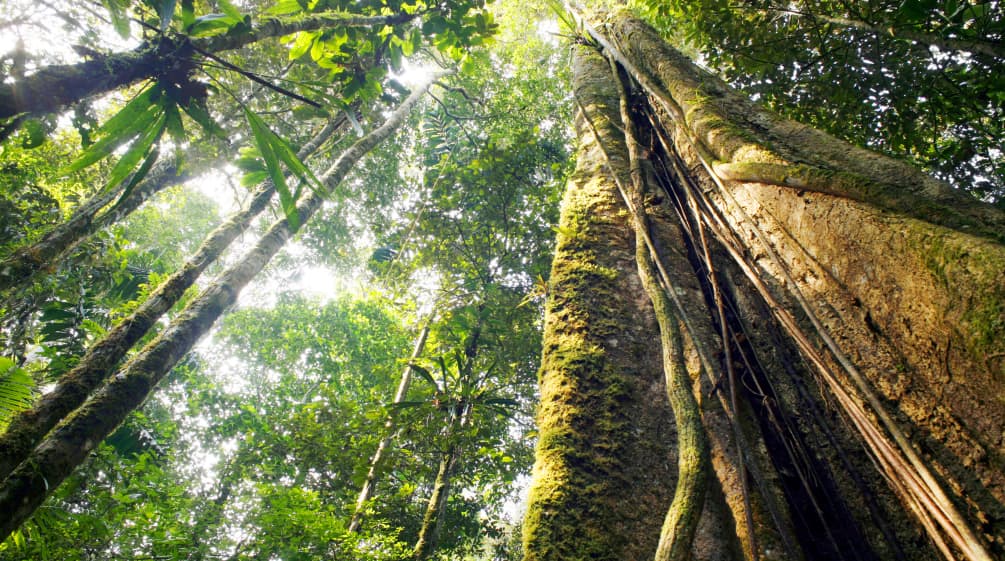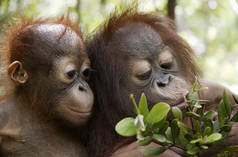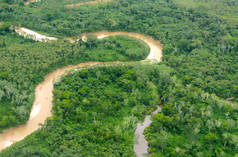2021: World loses 11.1 million hectares of tropical forest
 © Dr Morley Read / shutterstock.com
© Dr Morley Read / shutterstock.com
May 4, 2022
How much rainforest was cleared in 2021? According to the University of Maryland, the world lost 11.1 million hectares of forest in tropical regions. The development was particularly alarming in Brazil and the Democratic Republic of the Congo. The biggest drivers of destruction are logging, the expansion of agriculture and mostly set fires.
"The rate of primary forest loss in the tropics has been stubbornly consistent over the last few years," the researchers noted in their report. While fire-related losses fluctuated, the area destroyed by other causes remained nearly constant. In 2021, 0.62 million hectares were lost to fires, mostly started by humans. Another 3.13 million hectares were destroyed by other causes such as logging and the expansion of industrial agriculture and cattle grazing.
The destruction of primary rainforests is particularly worrying: on average, ten soccer fields per minute were lost in 2021. In total, 3.75 million hectares of rainforests, which are critical for carbon storage and biodiversity, were destroyed.
This released up to 2.5 Gt of carbon dioxide into the atmosphere – a volume equivalent to India's annual emissions – according to university data processed by Global Forest Watch.
In Brazil, 1,548,657 hectares of forest were destroyed, accounting for 40 percent of the global loss. The Democratic Republic of Congo (DRC) ranks second with 499,059 hectares. Bolivia is in third place with 291,379 hectares. The worst affected country in Asia is Indonesia, with 202,905 hectares (ranked fourth globally).
In percentage terms, Brazil and DRC each lost 0.5 percent of their forest cover in 2021 alone, while the rate in Indonesia was 0.2 percent. The most rapid losses are occurring in Cambodia (-1.5 percent), Laos (-1 percent), and Bolivia (-0.7 percent).
According to the data, forest loss in Indonesia – a worldwide hotbed of environmental degradation – has been declining for five years. However, the experts point out that the trend could reverse, citing the Covid pandemic and the price of palm oil as drivers of deforestation.
In Brazil, especially in the west, there are new hotspots with more than 25 percent loss of primary forests due to causes other than fire. This includes, but is not limited to, the clearing of land for cattle grazing along existing forest tracks. In Bolivia, rainforests face grave threats due to the expansion of industrial soy and cattle production. The researchers warn that the Amazon rainforest is approaching a tipping point at which the interactions between deforestation, climate change and fires could lead to the irreversible transformation of vast areas of the Amazon into a savanna.
In Africa, DRC is the country with the highest forest loss. In addition to logging, small-scale agriculture and firewood and charcoal production are contributing more than elsewhere. The authors of the report see positive developments in Gabon and the Republic of Congo.
The evaluation is largely limited to tropical forests, but the trend in boreal forests, particularly in Russia, is also worrying. In 2021, 8.55 million hectares were lost in northern latitudes. While the impact on biodiversity may be less there than in the tropics, the consequences for the climate are no less catastrophic.
UN also presents report on forest loss
The Food and Agriculture Organization of the United Nations (FAO) has also produced a forest report, in this case covering the period from 2000 to 2018.
It finds that tropical forest loss, at 157 million hectares, accounted for more than 90 percent of global deforestation. That is an area about the size of western Europe.
"Unsustainable agricultural development and other land uses continue to put intense pressure on our forests, especially in many of the poorest countries," said FAO Deputy Director-General Maria Helena Semedo in a press statement.
According to the FAO, cropland expansion – including oil palm plantations – is the main driver of deforestation, causing almost 50 percent of global deforestation, followed by livestock grazing, accounting for 38.5 percent.











